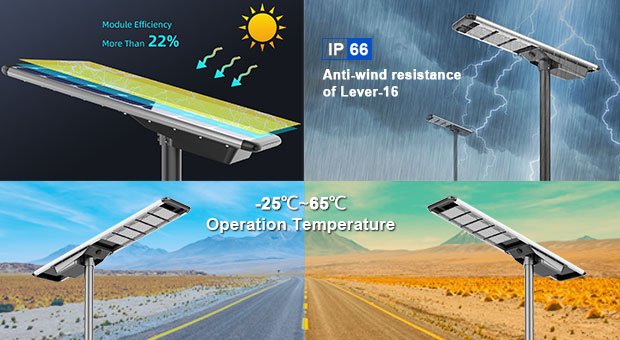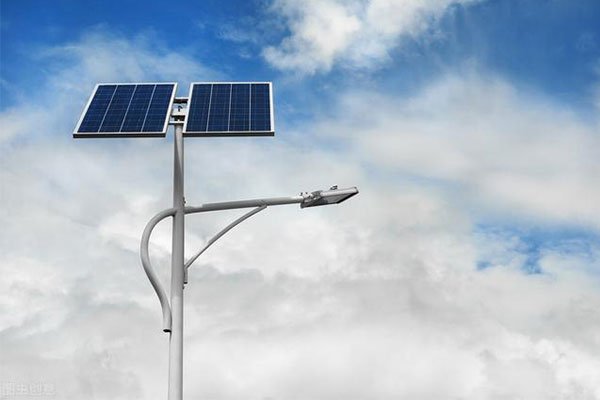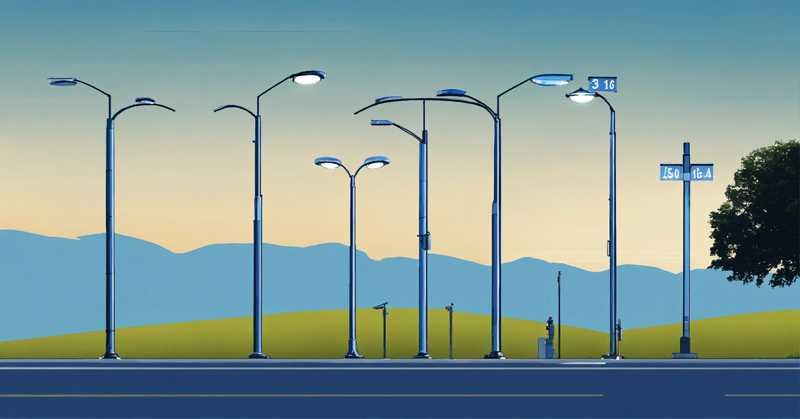Selecting the correct wattage for street lighting is crucial for efficiency, safety, and cost-effectiveness. Using the wrong wattage can result in poor illumination or unnecessary energy consumption.
The right wattage depends on pole height, road width, and lighting needs. Proper selection improves visibility, reduces costs, and enhances sustainability.
Understanding these factors helps municipalities, contractors, and businesses optimize their street lighting systems. Let’s explore how to make the best wattage choices.
Guidelines for Choosing Street Light Wattage
Choosing the right wattage ensures the right balance between brightness and energy efficiency.
Street light wattage should be selected based on pole height, road width, and traffic conditions. Below are general recommendations.
1. Wattage Recommendations by Pole Height and Road Width
| Wattage | Pole Height | Suitable Road Width | Common Applications |
|---|---|---|---|
| 10W | 2.5m - 3m | ≤4m | Pedestrian paths, parks, alleys |
| 15-20W | 3m - 4.5m | 4m - 6m | Residential streets, small roads |
| 20-30W | 5m - 6m | 6m - 10m | Two-lane streets, suburban roads |
| 30-50W | 6m - 7m | 8m - 12m | Wider two-lane roads, small commercial areas |
| 50-80W | 7m - 8m | 10m - 14m | Roads with 2-3 lanes, parking lots |
| 80-100W | 8m - 10m | 12m - 18m | Major roads, intersections |
| 120W-200W | ≥10m | 18m+ | Highways, large urban streets |
2. Factors Affecting Wattage Selection
Pole Height and Road Width
The taller the pole and the wider the road, the higher the wattage required to provide adequate illumination.
Pole Spacing and Layout
The distance between poles determines light uniformity. Closer pole spacing allows lower wattage per fixture, while wider spacing requires higher wattage.
Boom Length and Angle
The mounting arm's extension and angle affect how light spreads across the road.
Distance from the Road
Lights mounted too far from the road require additional wattage or optical adjustments to direct light efficiently.
The Role of Lighting Design in Wattage Selection

Modern lighting design tools help optimize wattage selection for specific environments.
Using lighting simulation software ensures uniform light distribution and compliance with safety standards.
1. Importance of Lighting Simulations
- Optimizes light placement to reduce glare and dark spots
- Helps meet local lighting regulations for urban and rural settings
- Reduces energy waste by identifying the most efficient wattage
2. Case Study: Urban vs. Rural Street Lighting
| Factor | Urban Roads | Rural Roads |
|---|---|---|
| Pole Height | 8m-12m | 6m-8m |
| Wattage | 100W-200W | 30W-80W |
| Pole Spacing | 25m-50m | 30m-60m |
| Lighting Uniformity | High priority | Moderate priority |
Urban areas require higher wattage for high traffic volumes and increased safety, while rural roads can use lower wattage due to lower traffic density.
Importance of Light Distribution in Street Lighting
Choosing the correct light distribution pattern is as important as selecting the right wattage.
A well-designed lens optimizes light spread, reducing energy waste and enhancing visibility.
1. Types of Light Distribution Patterns
| Pattern Type | Beam Spread | Best for |
|---|---|---|
| Narrow Beam | Focused, long reach | Highways, tall poles |
| Wide Beam | Broader spread | Urban streets, parking lots |
| Asymmetric Beam | One-sided lighting | Sidewalks, bike lanes |
2. Lens Selection for Optimal Distribution
LED street lights use optical lenses to direct light precisely where needed. Choosing the correct lens ensures that light reaches the target area without excessive glare or spillover.
Enhancing Flexibility and Scalability in Street Lighting Systems

Flexible lighting systems allow adjustments to brightness and wattage based on real-time needs.
Adaptive LED street lighting improves energy efficiency and extends fixture lifespan.
1. Adjustable LED Light Fixtures
- Dimmable LEDs adjust brightness based on traffic conditions.
- Adaptive lighting reduces energy use during off-peak hours.
2. Implementing Smart Lighting Control Systems
| Smart Control Feature | Benefit |
|---|---|
| Dusk-to-Dawn Sensors | Automatically turns lights on/off based on ambient light levels |
| Motion Sensors | Adjusts brightness based on vehicle or pedestrian movement |
| Time-Based Dimming | Lowers brightness during off-peak hours to save energy |
Smart street lighting reduces electricity costs while maintaining safety.
3. Modular Lighting Design for Scalability
- Modular LED fixtures allow easy wattage upgrades.
- Interchangeable lighting components enable future expansion.
- Hybrid LED + Solar systems provide energy independence.
4. Remote Monitoring & Management for Dynamic Control
IoT-based smart lighting systems provide real-time insights into street light performance.
Remote monitoring helps detect malfunctions early, improving maintenance efficiency.
| Feature | Benefit |
|---|---|
| Energy Monitoring | Tracks real-time power usage |
| Failure Detection | Alerts maintenance teams about faulty fixtures |
| Remote Adjustments | Allows on-the-fly brightness adjustments |
5. Planning for Future Expansion
Infrastructure planning should include future-proofing strategies.
- Use expandable fixtures that support higher wattage if needed.
- Plan for additional smart lighting integrations as technology evolves.
- Invest in modular poles and arms to support new lighting upgrades.
Long-term planning reduces replacement costs and enhances the adaptability of street lighting networks.
Conclusion

Choosing the right wattage for street lighting involves considering pole height, road width, and lighting requirements. Using proper wattage ensures safety, energy efficiency, and cost savings.
Smart lighting solutions, adaptive controls, and modular designs enhance flexibility and scalability, making street lighting systems more efficient and sustainable.
Cities and businesses investing in well-designed LED street lighting will benefit from improved visibility, reduced energy consumption, and lower maintenance costs in the long run.







